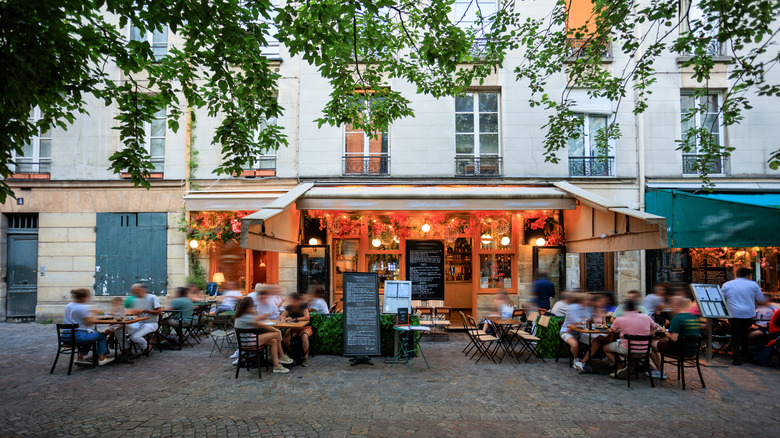
Fani Kurti/Getty Images
Chances are that if you’re in the U.S. or Europe, you’re somewhere near a French restaurant. But for all the great ones out there, there are as many places that you should be avoiding like the plague. From tourist traps in city centers to poorly run restaurants that’ll have you feeling like you’re in an episode of “Kitchen Nightmares,” there’s little worse than a genuinely bad French restaurant. Luckily, there are signs to look out for to make sure you avoid the duds.
One French restaurant red flag that should send you running is an oversized menu. You’ve probably been to one of these places before — professing to serve authentic French cuisine, but with an expansive, Cheesecake Factory-esque tome of a menu. Ultimately, this means one thing: Frozen food. Or, at the very least, food that isn’t fresh. The fact is, most restaurants just can’t produce hundreds of dishes à la minute without the help of a freezer and a microwave. An overambitious menu indicates an emphasis on quantity over quality, and is about as far as you can get from “authentic.”
A good French restaurant should have a reasonably short, seasonal menu that prizes great produce and what’s available over trying to impress with a lengthy menu. Too many items with little ingredient overlap reveal a lack of identity. Ultimately, it’s always better for a restaurant to be saying “Look how good our food is,” rather than “Look how much food we can make!”
Look for ingredients that seem suspicious

From_my_point_of_view/Getty Images
French food is capable of incredible complexity — France is the country with the most Michelin stars, after all — but the philosophy behind it is simple. While much of Italian cooking has a more “low intervention” approach, allowing high-quality ingredients to speak for themselves, French cooking focuses more on taking any ingredient and transforming it into an impressive meal through skillful techniques. Even the so-called “peasant food” that forms the foundation of French cuisine (such as boeuf bourguignon, cassoulet, or terrine) is always luxurious, with a focus on bold flavors, generous saucing, and refinement.
Several modern restaurants have made using seasonal ingredients part of their brand image, treating it as a recent trend, but in reality, this shouldn’t need to be advertised. The best restaurants should have always been seasonal anyway, with the thought in mind that “What grows together, goes together.” This is especially true of cooking French food. While there’s a wonderful emphasis on preservation (think of rillettes, pâtés, saucisson, and the like), the heart of French food lies in using what you have, when you have it.
So when you arrive at a French restaurant, have a gander at the menu. If you see ingredients that look suspiciously out of place (pumpkins in June, or asparagus in December, for example), it could be a sign that the owner isn’t putting the quality of the produce first. A good French restaurant will take pride in its ingredients and skill.


Dining and Cooking